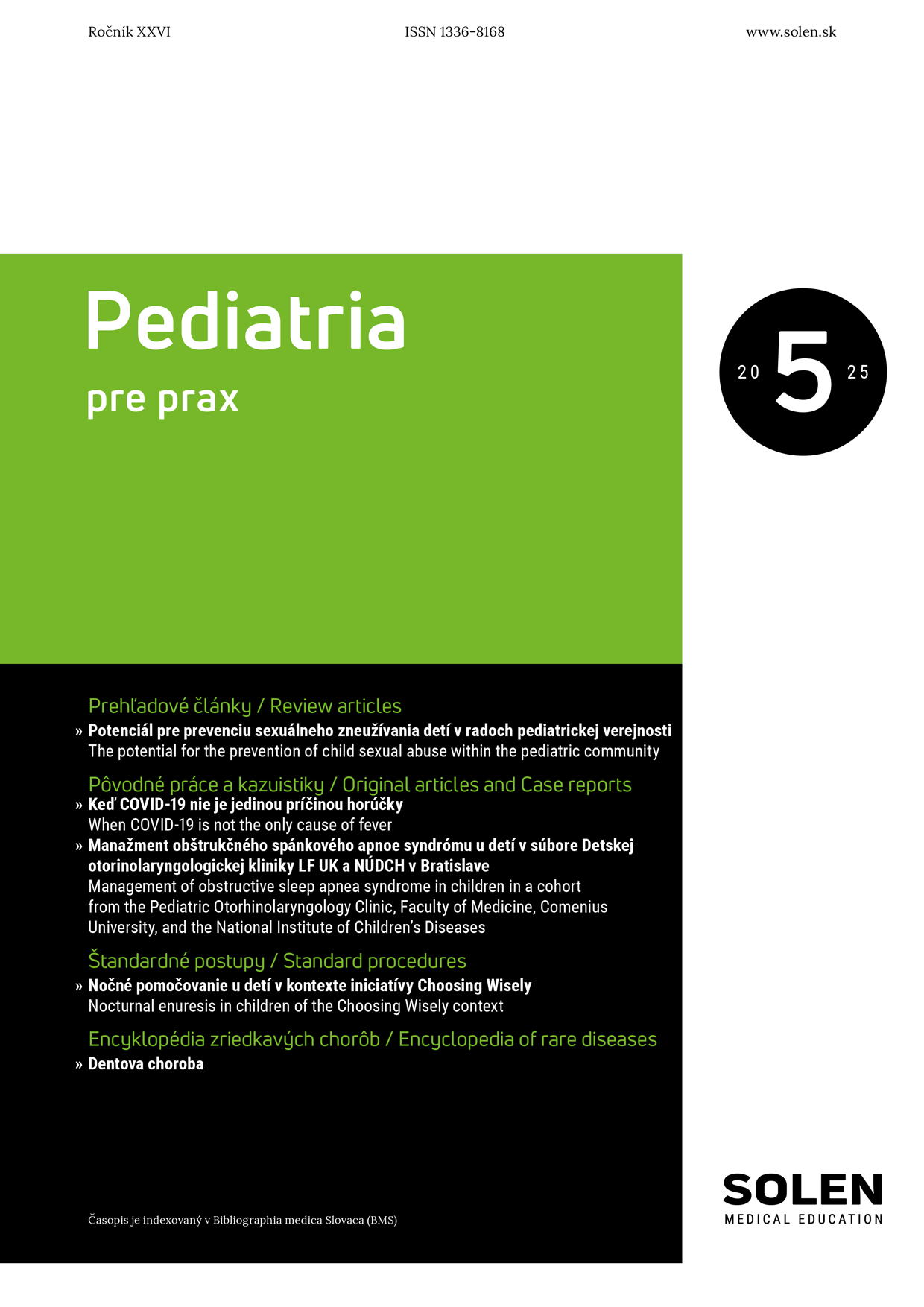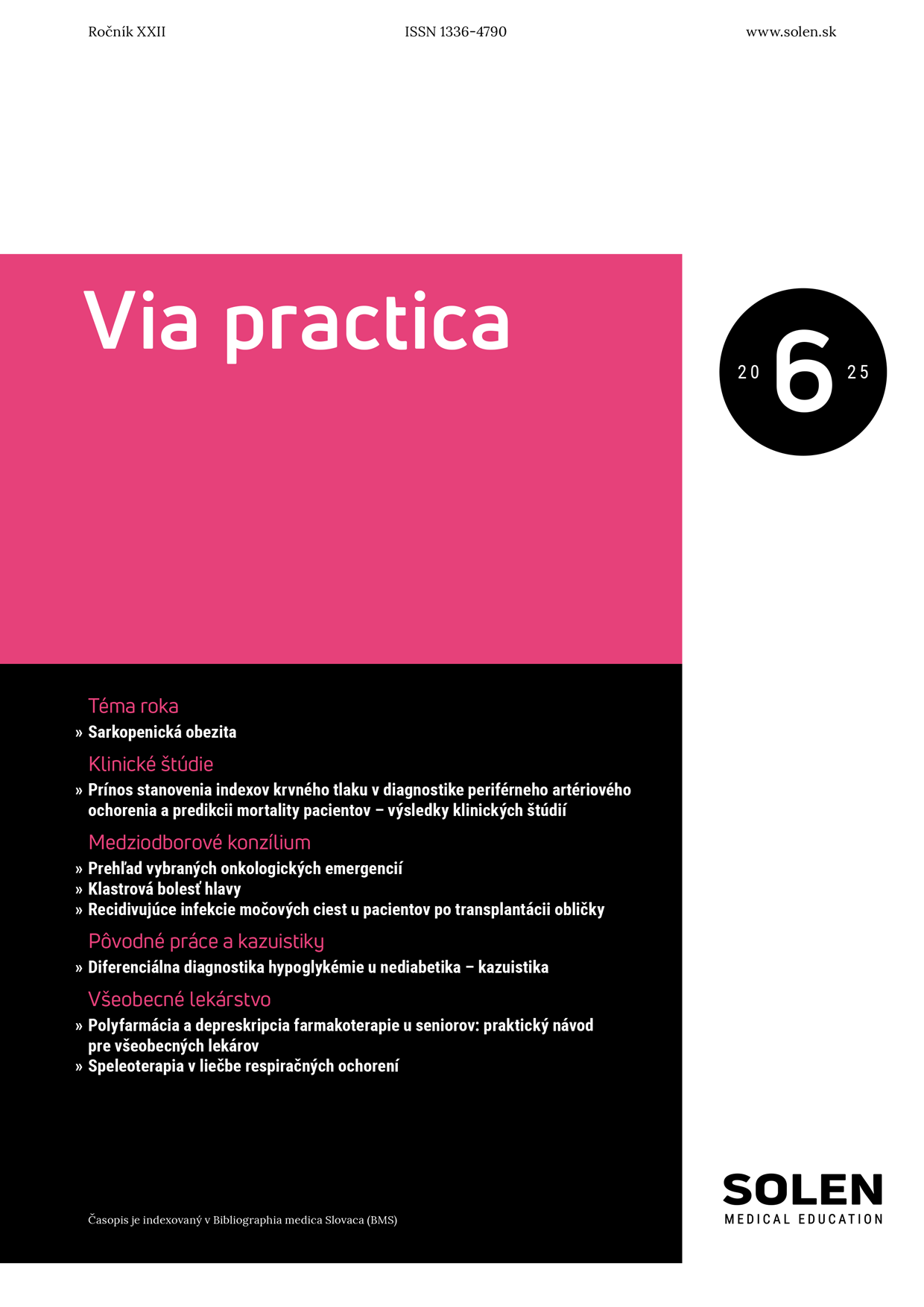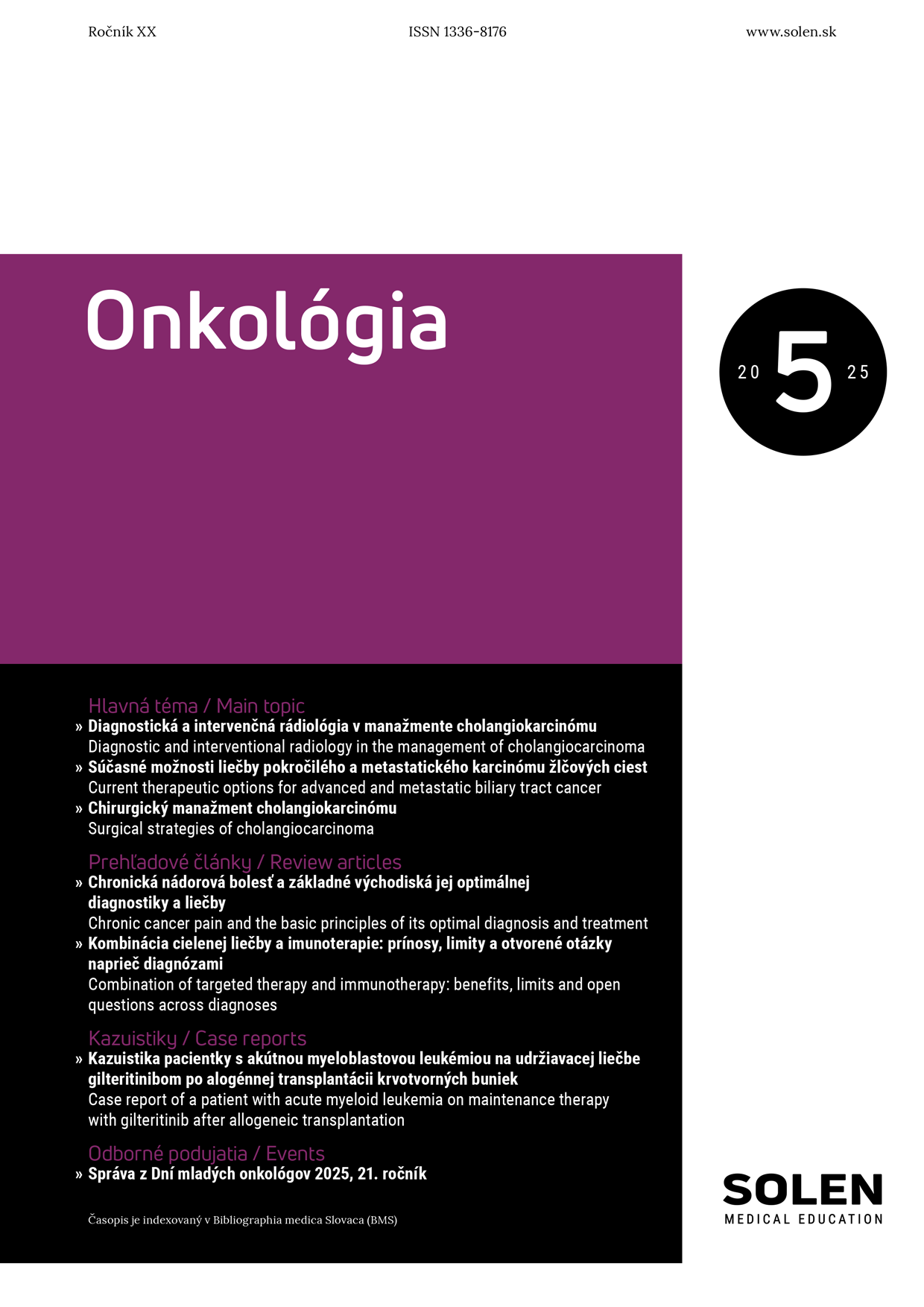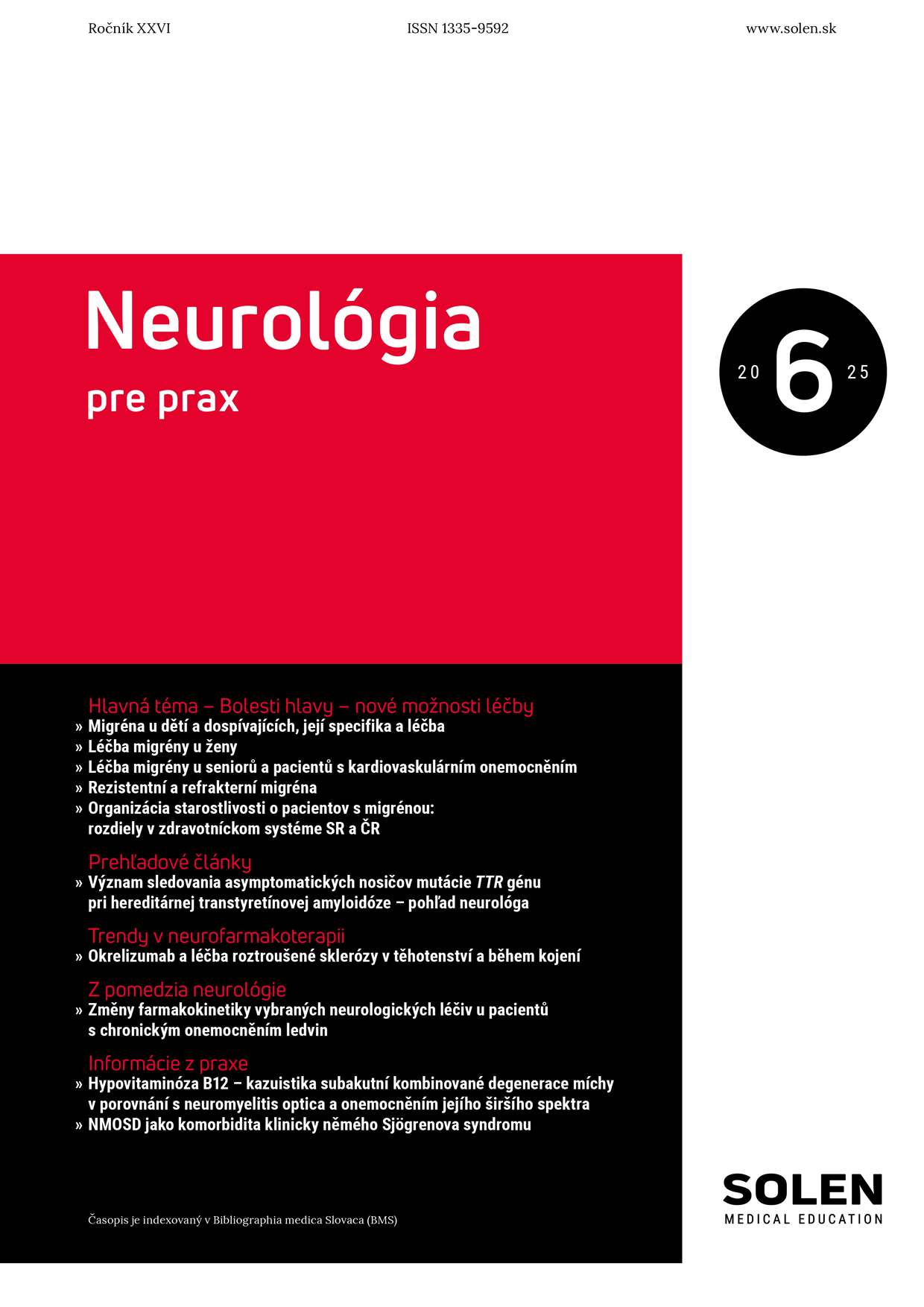Onkológia 4/2020
Liquid biopsy in colorectal carcinoma
Colorectal carcinoma (CRC) is the second most common cause of death within oncology indications. Information obtained from tissue biopsy provide only limited insights into biological properties of the tumor and its heterogeneity. Liquid biopsy methods can compensate for the shortcomings of diagnostic pathology by capturing heterogeneity of the tumor and its dynamics in real time, providing overview of genetic alterations in tumor cells. Peripheral blood is the main source of liquid biopsy and its analysis comprise detection of circulating tumor cells, circulating tumor DNA and RNA . The primary application of liquid biopsy is in early detection of cancer, determination of the stage of disease, evaluation and monitoring of the efficacy of the treatment and measuring minimal residual disease (MRD). Liquid biopsy can be used for CRC screening. It has been demonstrated that the presence of circulating tumor cells (CTC), tumor clusters or epigenetic alterations of ctDNA can differentiate samples of healthy individuals from patients with colorectal carcinoma. Liquid biopsy can also provide prognostic data and basis for predictions, that can be applied in determining MRD. Measurements of ctDNA can determine MRD measures faster and with higher precision, due to the short biological half-life of free ctDNA in blood. CTC detection and ctDNA could therefore serve as a complement to a standard TNM classification in the future. CtDNA can be also used for monitoring of RAS and BRAF mutations during anti-EGFR therapy. Measurement of RAS gene from ctDNA has higher sensitivity and specificity in comparison to the tissue biopsy. Despite all the advancements in developments of liquid biopsy techniques, extensive multi-centric studies that define the application of these methods are required to achieve broader clinical applications. It is estimated that specific indications, where the liquid biopsy methods can be applied will be determined in the near future, that will improve the management of CRC.
Keywords: liquid biopsy, circulating tumor cells, circulating tumor DNA

















